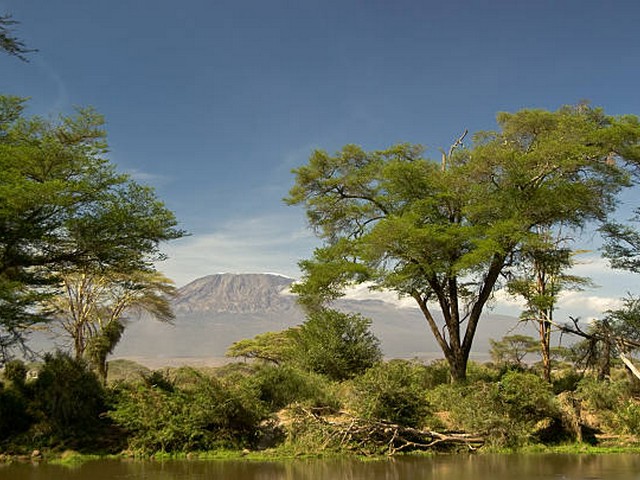Cuddle Up in Comfort: Choosing the Warmest Sleeping Bags for Kilimanjaro Trekking
Introduction: Embracing the Majestic Mount Kilimanjaro
As you plan your adventure to ascend the iconic Mount Kilimanjaro with Kilimanjaro Centre for Trekking and Ecotourism (KCTE), a good night’s sleep is as vital as your hiking boots. The secret to waking up refreshed and energized each morning of your climb? Investing in one of the warmest sleeping bags for Kilimanjaro trekking. As you brave the varying climates from tropical to arctic on this grand mountain, your sleeping bag will be your nightly refuge. Let’s explore how the right sleeping bag can make your journey not only bearable but also exceptionally enjoyable.
Why a Warm Sleeping Bag is a Kilimanjaro Essential
Weathering the Altitude
The higher you climb, the colder it gets. Temperatures on Kilimanjaro can plummet to below freezing at night, particularly at higher camps like Barafu before your summit push. A warm sleeping bag is not just a comfort; it’s a necessity for safety and health, helping prevent hypothermia.
Enhancing Sleep Quality
After a long day of trekking, quality sleep is crucial. The right sleeping bag provides the warmth and comfort needed to ensure that your body recovers and revitalizes overnight.
Weight and Packing Constraints
Choosing a sleeping bag that is both warm and suitable for trekking means balancing warmth with weight and packability. A lighter, less bulky bag is ideal for reducing your load, which is essential for a multi-day trek.
Identifying the Best Sleeping Bags for Your Kili Adventure
1. Down vs. Synthetic: The Great Debate
- Down Sleeping Bags: Known for their excellent warmth-to-weight ratio, down sleeping bags are typically lighter and more compressible. If you decide on down, ensure it has a high fill power (800 or more) and is treated to withstand moisture, as down loses its insulating properties when wet.
- Synthetic Sleeping Bags: Offering consistent insulation even when damp, synthetic bags are a reliable choice for the often humid conditions on Kilimanjaro. They are usually heavier but are more affordable and easier to care for than down.
2. Temperature Rating: The Numbers Game
Look for a sleeping bag with a temperature rating that matches or goes below the lowest temperatures you expect to encounter. For Kilimanjaro, we recommend a rating of at least -10°C (14°F). Remember, it’s better to err on the side of warmth.
3. Shape and Size: Snuggle Up Right
- Mummy Bags: These are tapered at the feet and have a hood, helping to maximize heat retention. They are the preferred type for Kilimanjaro’s colder high-altitude nights.
- Rectangular Bags: Although they offer more room to move, they are not as efficient at keeping you warm in freezing conditions.
4. Features for Functionality and Comfort
- Zippers: A no-snag zipper is a must. Consider models with a full-length zipper to adjust ventilation.
- Neck Collars and Hood: These features help trap heat inside the bag. An adjustable hood can make a significant difference in warmth.
- Draft Tubes: Located along the zipper line, these help prevent cold air from seeping through the zipper.
Top Picks: Warmest Sleeping Bags for Kilimanjaro Trekking
- The North Face Inferno -40: An expedition grade bag that’s perfect for the coldest Kilimanjaro nights. Its water-resistant down insulation ensures warmth in any weather.
- Mountain Hardwear Phantom Gore-Tex -40: This bag combines lightweight warmth with waterproof technology, providing protection against frost or moisture.
- Marmot Col -20: A great option for those who prefer down but need something less extreme. It’s ideal for most nights on Kilimanjaro, with an extra layer of clothing reserved for the coldest nights.
- REI Co-op Magma 10: An excellent balance of warmth, weight, and cost. Suitable for those looking for high performance without breaking the bank.
- Synthetic Option: Big Agnes Echo Park 0: Tailored for adventurers preferring synthetic, this bag offers ample space and guarantees warmth even when damp.
FAQs: Warmest Sleeping Bags for Kilimanjaro Trekking
Q1: Can I rent a high-quality sleeping bag from KCTE?
Absolutely! KCTE offers rental services for top-grade sleeping bags suitable for the temperatures on Kilimanjaro. This is a great option if you’re looking to reduce your initial costs.
Q2: Should I bring my own liner?
Yes, bringing a sleeping bag liner can add extra warmth and also help keep your rental bag clean. Silk liners are light and can add up to 5°C of warmth.
Q3: How should I pack my sleeping bag?
Most sleeping bags come with a stuff sack. Compress it down as much as possible, and if rain is a concern, consider a waterproof bag or liner to keep it dry.
Q4: Is there a difference in choice between men’s and women’s sleeping bags?
Women’s sleeping bags are designed to provide more insulation at the feet and torso. Consider these if you tend to feel colder than average.
Ready to Embark on Your Kilimanjaro Journey?
Packing the warmest sleeping bag for your Kilimanjaro trek can make the difference between a good and a great adventure. At Kilimanjaro Centre for Trekking and Ecotourism (KCTE), we not only provide expert guidance on preparing for your climb but also ensure you’re outfitted with the best gear to face the mountain’s many challenges.
Are you ready to conquer Kilimanjaro with comfort and confidence? Book your climb with KCTE today, and experience the roof of Africa wrapped in the warmth of the perfect sleeping bag. Visit our website or contact us to find out more about our Kilimanjaro treks and to get personalized equipment recommendations tailored just for you. Let’s make your dream of reaching the summit a warm and triumphant reality!




